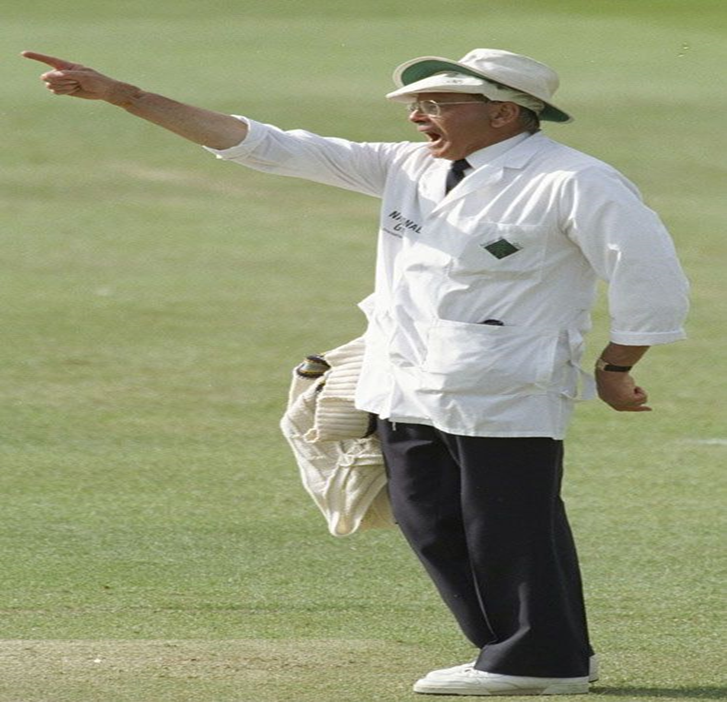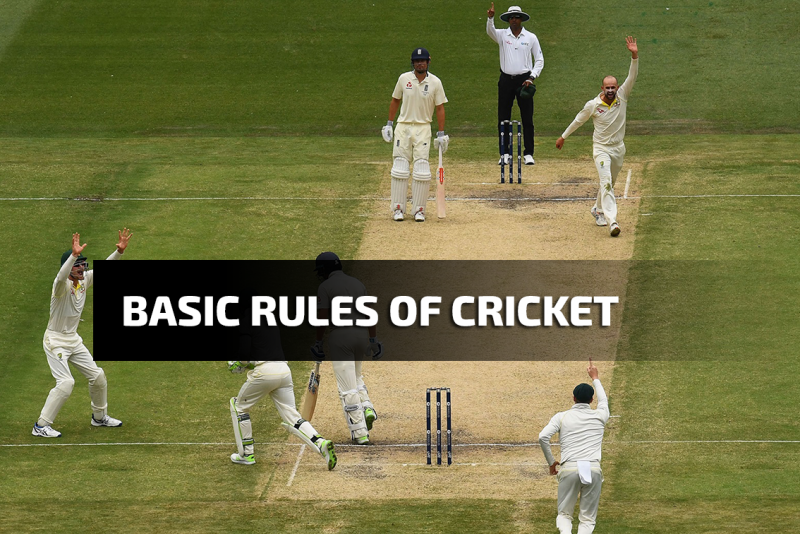Cricket is the second most popular game just behind Soccer, yet it is unfamiliar to most of the people. People find cricket difficult to play because of its hard to understand rules and terminologies. Seeing these confusions regarding basic rules of cricket, we are bringing you the simplistic version of important cricket’s rules. After reading it, one can easily understand how to play cricket without any confusion.
![Picture of Basic Cricket Tools: A bat, ball, and wickets (Picture Credit: Unsplash)]()
The goal of both the teams is to score higher compared to the opponent team to secure a win. Toss will decide which team will play first and set the target for the opponent team. The 2nd team will try to chase the target set by the first team in order to win the match.
T20: The shortest format is “T20 Match” where only 20 overs at max are allowed for each team.
One Day: A little longer version is “ODI Match” where a maximum 50 overs are allowed for each inning.
Test Match: The longest version of a cricket match, where there is no limit of overs is called Test Match. In this format, a match can last up to 5 days and each team has to play two innings each at max.
Note: Each over lasts for at least 6 balls.
If the fielding team fails to stop the ball before it hit the boundary rope, the runs are counted either 4 or 6 depending on how the ball crossed that boundary rope. If the ball crossed the boundary rope without touching the ground, 6 runs are given to the batter team. On the other hand, if balls crossed the boundary rope after hitting the ground, 4 runs are given to the batter’s team.
There is one more way to score runs. If a bowler doesn't bowl according to rules, for example, bowling a no-ball or a wide ball provide one run to the batting side without counting that ball (Read How to score runs in cricket).
![A Typical Cricket Ground]() A Typical Cricket Ground (Picture Credit: Unsplash)
A Typical Cricket Ground (Picture Credit: Unsplash)
Bowled: A batter is considered out if he is failed to stop the ball, bowled by the bowler to hit the wickets. No matter if the ball hits the stumps with or without touching his body or bat, the batsman is considered out.
Leg before wicket (LBW): The other way to out a batsman is to LBW him. In this case, the ball should hit the batter's leg while it is before the wicket. If the legs are not before the wicket or ball hit the leg after hitting the bat, batsman considered not out. Only the front umpire will decide if the batsman is LBW or not.
Caught: If a Batsman hits the ball and fielder caught the ball before it hits the ground or crosses the boundary rope, the batsman is given out.
Run Out: A batsman is considered “Run Out” if he fails to reach his crease before ball hitting the stumps during scoring runs between the wickets.
Note: A crease is a mark on the pitch, inside which a batsman considered safe from “Run Out”.
Stumped: A batsman can be stump out if the wicketkeeper, standing just behind the wickets, removes the bails off the wickets holding the ball in his hands while the batsman and his bat were outside the crease.
Remember: All rules of cricket are enforced by a couple of empires in the ground. If they can't decide on some of the matters, they can refer to the third umpire. The third umpire will review the matter with the help of technology including replay.
![Umpire Giving a Batsman Out]()
If the match was interrupted due to bad weather and was abandoned before 40% of the overs being played for both sides, there will be no result of the match. In another scenario, both the team played full overs but their scores were tied, the match considered tied and both teams get 1-1 point until other ways of deciding the match-winner are not applied.
Learn more on the difference the difference between a tie and a draw in cricket.

Picture of Basic Cricket Tools: A bat, ball, and wickets (Picture Credit: Unsplash)
The Theme of the Game
The theme of the cricket is very simple; there are two teams of 11 players each in a match. Each team is divided into different numbers of Bowlers, Batsmen, and a Wicket Keeper depending on the strategy of the team. The Bowler is the one who bowls the ball, batsman or batter face the ball and try to score the runs by hitting the ball using his bat, and keeper catches the ball if the batter has failed to click the ball.The goal of both the teams is to score higher compared to the opponent team to secure a win. Toss will decide which team will play first and set the target for the opponent team. The 2nd team will try to chase the target set by the first team in order to win the match.
Formats of the Match
There are generally 3 formats of a cricket match being played between two teams.T20: The shortest format is “T20 Match” where only 20 overs at max are allowed for each team.
One Day: A little longer version is “ODI Match” where a maximum 50 overs are allowed for each inning.
Test Match: The longest version of a cricket match, where there is no limit of overs is called Test Match. In this format, a match can last up to 5 days and each team has to play two innings each at max.
Note: Each over lasts for at least 6 balls.
Cricket Pitch
Cricket pitch is similar to a narrow strip, normally located in the center of the ground between the wickets. The length of the pitch, though not constant, is around 20 meters and the width is about 3 meters. Its surface is flat in nature and sometimes contains a thin layer of grass on it.How to Score Runs
Scoring runs in cricket is perhaps the most important aspect of the game. There are normally three ways to earn runs in cricket. The first way to score runs is through running between the wickets after the batter has hit the ball. The pair of batsmen can run between the wickets to score as many runs as they can before the fielding team hits the ball on wickets present on both sides of the pitch.If the fielding team fails to stop the ball before it hit the boundary rope, the runs are counted either 4 or 6 depending on how the ball crossed that boundary rope. If the ball crossed the boundary rope without touching the ground, 6 runs are given to the batter team. On the other hand, if balls crossed the boundary rope after hitting the ground, 4 runs are given to the batter’s team.
There is one more way to score runs. If a bowler doesn't bowl according to rules, for example, bowling a no-ball or a wide ball provide one run to the batting side without counting that ball (Read How to score runs in cricket).
 A Typical Cricket Ground (Picture Credit: Unsplash)
A Typical Cricket Ground (Picture Credit: Unsplash)How a Batsman can be Given Out
Another confusing yet most important set of cricket rules are related to how a batsman/batter can be given out by umpires. All possibilities are given below.Bowled: A batter is considered out if he is failed to stop the ball, bowled by the bowler to hit the wickets. No matter if the ball hits the stumps with or without touching his body or bat, the batsman is considered out.
Leg before wicket (LBW): The other way to out a batsman is to LBW him. In this case, the ball should hit the batter's leg while it is before the wicket. If the legs are not before the wicket or ball hit the leg after hitting the bat, batsman considered not out. Only the front umpire will decide if the batsman is LBW or not.
Caught: If a Batsman hits the ball and fielder caught the ball before it hits the ground or crosses the boundary rope, the batsman is given out.
Run Out: A batsman is considered “Run Out” if he fails to reach his crease before ball hitting the stumps during scoring runs between the wickets.
Note: A crease is a mark on the pitch, inside which a batsman considered safe from “Run Out”.
Stumped: A batsman can be stump out if the wicketkeeper, standing just behind the wickets, removes the bails off the wickets holding the ball in his hands while the batsman and his bat were outside the crease.
Remember: All rules of cricket are enforced by a couple of empires in the ground. If they can't decide on some of the matters, they can refer to the third umpire. The third umpire will review the matter with the help of technology including replay.

Umpire Giving a Batsman Out (Picture Credit: Pinterest)
The Decision of the Match Winner
The captain of toss winning team decides which team will bat first. Then the batting side will set a total for an opponent team in the given limit of overs. After which both teams will switch the roles; the batting side will now defend his total and the bowling side will try to chase the target set by the opponent team. If they successfully chase down the target within the overs’ limit and without losing all of the wickets they will win the match.If the match was interrupted due to bad weather and was abandoned before 40% of the overs being played for both sides, there will be no result of the match. In another scenario, both the team played full overs but their scores were tied, the match considered tied and both teams get 1-1 point until other ways of deciding the match-winner are not applied.
Learn more on the difference the difference between a tie and a draw in cricket.






















